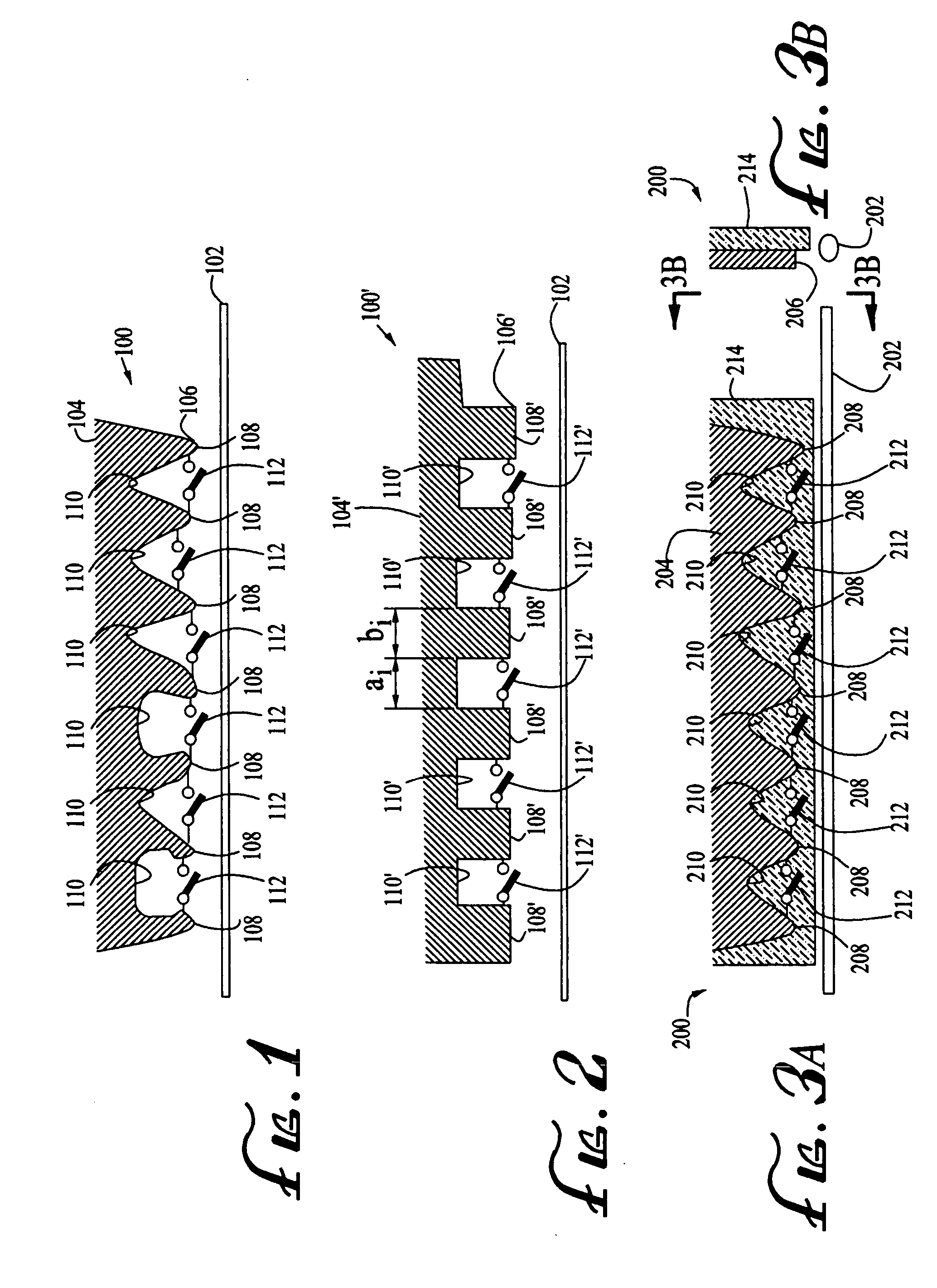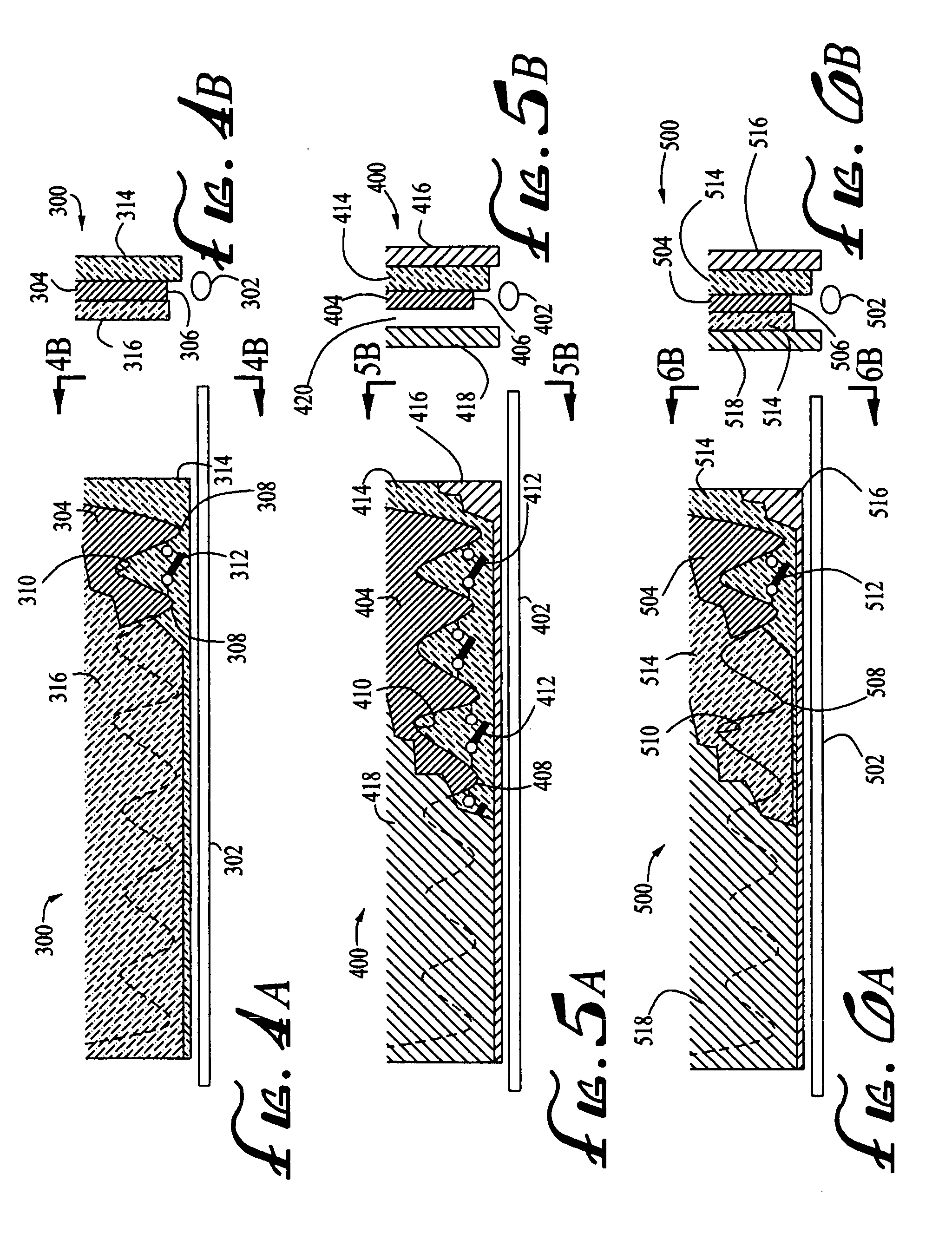Reconfigurable dielectric waveguide antenna
- Summary
- Abstract
- Description
- Claims
- Application Information
AI Technical Summary
Benefits of technology
Problems solved by technology
Method used
Image
Examples
second embodiment
[0036]FIGS. 3A and 3B illustrate an antenna 200, in accordance with the invention, having a transmission line 202, as described above, and a metal antenna plate 204, the latter having an evanescent coupling edge 206 comprising a series of alternating convexities or serrations 208 and concavities or notches 210. As in the previously-described embodiment, each adjacent pair of convexities 208 is selectively connectable by a switch 212.
[0037] In the antenna of FIGS. 3A and 3B, the metal antenna plate 204 is advantageously formed or placed on a substrate 214. The substrate 214 may be a dielectric material, such as quartz, sapphire, ceramic, a suitable plastic, or a polymeric composite. Alternatively, the substrate 214 may be a semiconductor, such as silicon, gallium arsenide, gallium phosphide, germanium, gallium nitride, indium phosphide, gallium aluminum arsenide, or SOI (silicon-on-insulator).
third embodiment
[0038]FIGS. 4A and 4B show an antenna 300 according to the invention, which, like the previously-described embodiments, includes a transmission line 302 and a metal antenna plate 304. The antenna plate 304 has an evanescent coupling edge 306, having convexities 308 separated by concavities 310. Each adjacent pair of convexities 308 is selectively connectable by a switch 312, as discussed above. In this embodiment, the metal antenna plate 304 is sandwiched between a substrate 314 and a cover layer 316. As in the embodiment of FIGS. 3A and 3B, the substrate 314 may be either a dielectric or a semiconductor material. The cover layer 316 is also of a dielectric or semiconductor material, but not necessarily the same material as that of the substrate 314.
fourth embodiment
[0039] An antenna 400 in accordance with the invention is shown in FIGS. 5A and 5B. The antenna 400 includes a transmission line 402 and a metal antenna plate 404. The antenna plate 404 has an evanescent coupling edge 406, having convexities 408 separated by concavities 410. Each adjacent pair of convexities 408 is selectively connectable by a switch 412, as discussed above. In this embodiment, the metal antenna plate 404 is formed on or adhered to the front surface of a dielectric or semiconductor substrate 414, the rear surface of which is attached to a metal backing plate 416. A metal face plate 418 is separated by an air gap 420 from the metal coupling plate 404.
PUM
 Login to View More
Login to View More Abstract
Description
Claims
Application Information
 Login to View More
Login to View More - R&D
- Intellectual Property
- Life Sciences
- Materials
- Tech Scout
- Unparalleled Data Quality
- Higher Quality Content
- 60% Fewer Hallucinations
Browse by: Latest US Patents, China's latest patents, Technical Efficacy Thesaurus, Application Domain, Technology Topic, Popular Technical Reports.
© 2025 PatSnap. All rights reserved.Legal|Privacy policy|Modern Slavery Act Transparency Statement|Sitemap|About US| Contact US: help@patsnap.com



